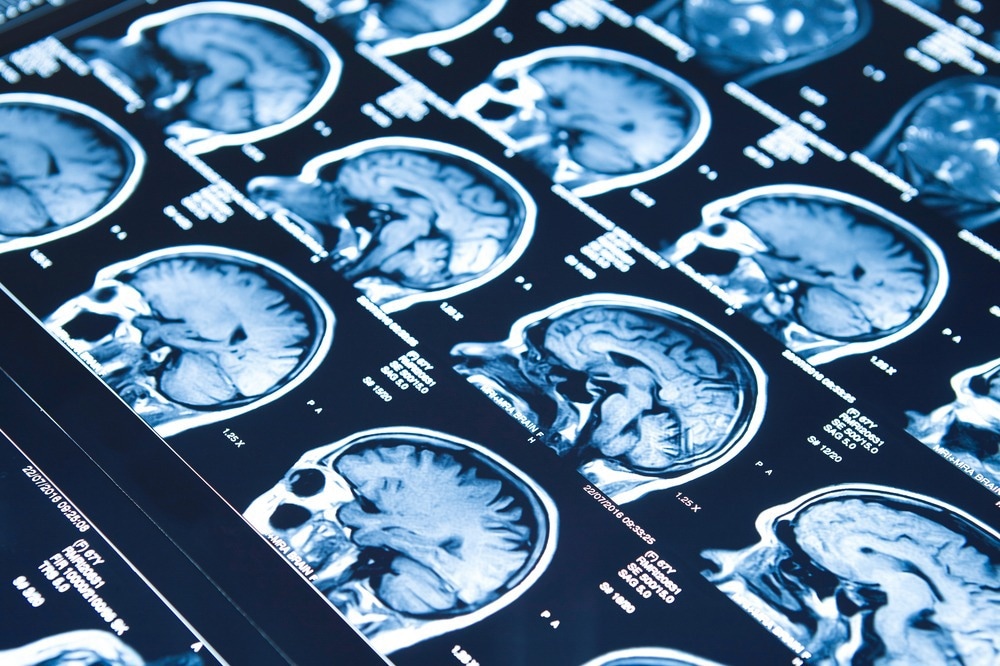Study reveals subtle brain asymmetry differences in schizophrenia

A recent study published in the Proceedings of the National Academy of Sciences (PNAS) analyzes structural brain asymmetries in schizophrenia.
Study: Large-scale analysis of structural brain asymmetries in schizophrenia via the ENIGMA consortium. Image Credit: hutpaza / Shutterstock.com
The pathology of schizophrenia
Schizophrenia is characterized by delusions, affective flattening, executive function deficits, disorganized speech, hallucinations, and avolition. Left-right asymmetry is an essential feature of cognitive functions. Schizophrenic individuals exhibit reduced left-lateralized language dominance. The rate of non-righthandedness is also elevated in schizophrenia.
Altered asymmetry of the cortex in schizophrenia has been reported in studies with small cohort sizes. The enhancing neuroimaging genetics through meta-analysis (ENIGMA) consortium, which conducts large-scale analyses, previously reported cortical thinning, altered subcortical volume, and smaller surface area in schizophrenic individuals relative to controls. However, these prior ENIGMA studies did not evaluate asymmetry.
About the study
In the present study, researchers measured cortical and subcortical asymmetries in schizophrenia in the largest sample from 46 distinct datasets. Structural magnetic resonance imaging (MRI) data were obtained from the datasets comprising 5,080 affected subjects and 6,015 controls. Controls had no past/present indication of schizophrenia. T1-weighted brain MRI scans were performed at study sites.
Cerebral surface area and cortical thickness measures were derived for 34 bilaterally paired Desikan-Killany atlas regions. Whole-hemisphere-level measurements of average cortical thickness and surface area were also derived.
Volumes for eight bilaterally paired regions from a neuroanatomic atlas of subcortical structures were derived. The right and left hemispheric measurements were used to estimate the asymmetry index (AI).
Case-control group differences were separately examined using univariate linear regression analysis. Effect sizes for diagnosis from each dataset were meta-analyzed for each regional brain AI and projected into three-dimensional meshes of inflated cortical/subcortical models from Brainder. For statistically significant AIs with group differences, post hoc analysis was performed using linear modeling to describe asymmetry differences.
Sensitivity analyses evaluated the effects' robustness for individual datasets with outlier effects, heterogeneity of differences between datasets and handedness, non-linear age effects, or intracranial volume. Secondary analyses assessed medication group differences and correlations between asymmetry and clinical variables. Finally, a multivariate analysis based on 14 datasets was performed to determine group differences simultaneously in one model.
Findings
Genetics & Genomics eBook

The whole-hemisphere average cortical thickness and surface area asymmetries were not significantly different between cases and controls. However, a small but significant difference in the thickness asymmetry of the middle temporal gyrus and rostral anterior cingulate cortex was observed between cases and controls at the regional level. Post hoc analysis showed that the thinner left cortex in schizophrenic individuals was responsible for these regional asymmetry differences.
Three datasets had outlier effects in the primary meta-analysis for the thickness asymmetry of the rostral anterior cingulate cortex. Excluding these and repeating the meta-analysis did not change the directionality of the group difference.
For the thickness asymmetry of the middle temporal gyrus, excluding two outlier datasets yielded a similar result. Group differences for these two regional AIs were nominally significant in models that included handedness, intracranial volume, and age.
The thickness asymmetry of the rostral anterior cingulate cortex was not different between medication groups. In contrast, a nominal but significant increase in the mean rightward asymmetry was observed in cases taking first-generation antipsychotics for the middle temporal gyrus; however, these differences were not significant upon multiple testing corrections.
Nominally significant correlations were identified between negative symptom severity and rostral anterior cingulate cortex thickness asymmetry. A similar correlation was observed between the thickness asymmetry of the middle temporal gyrus and illness duration. However, these correlations were insignificant after multiple testing corrections.
Additionally, there was a significant diagnosis-by-age interaction for pallidum volume asymmetry caused by lower average leftward asymmetry with advancing age in controls but not in cases. The right and left pallidum volume decreased with age in cases and controls.
A significant brain asymmetry difference was observed in the multivariate analysis with 935 cases and 1,094 controls, thus accounting for 7% of the variance across all AIs.
Conclusions
The current study's researchers assessed case-control differences in brain asymmetries in schizophrenia. There were subtle regional asymmetry differences in the thickness of the rostral anterior cingulate cortex and middle temporal gyrus, with asymmetry differences in the pallidum volume observed in older individuals.
These findings suggest that morphometric changes in schizophrenia are largely similar in either brain hemisphere, with only subtle asymmetries observed at the average group level. However, 7% of the total variance across all regional asymmetries was explained by the case-control group difference in the multivariate analysis, which suggests a diffuse/subtle alteration of brain asymmetry in schizophrenia.
- Schijven, D., Postema, M. C., Fukunaga, M., et al. (2023). Large-scale analysis of structural brain asymmetries in schizophrenia via the ENIGMA consortium. Proceedings of the National Academy of Sciences. doi:10.1073/pnas.2213880120
Posted in: Medical Science News | Medical Research News | Medical Condition News
Tags: Brain, Cortex, Genetics, Imaging, Language, Magnetic Resonance Imaging, Neuroimaging, Pathology, Schizophrenia, Speech

Written by
Tarun Sai Lomte
Tarun is a writer based in Hyderabad, India. He has a Master’s degree in Biotechnology from the University of Hyderabad and is enthusiastic about scientific research. He enjoys reading research papers and literature reviews and is passionate about writing.
Source: Read Full Article
